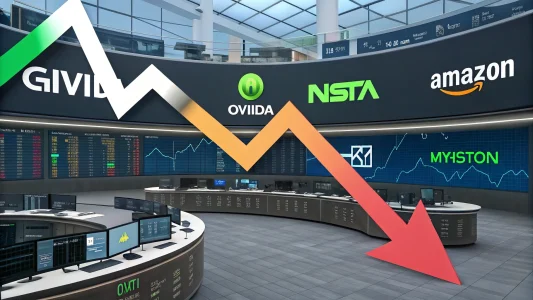Here are the realities behind holding large cash positions. I have often seen many individuals justify their high cash reserves by comparing themselves to celebrated investors. However, it is essential to recognize that what works for those with substantial portfolios may not be a universal strategy.
Table of Contents
ToggleCash Reserves Are Not A Strategy
There is a common misconception that maintaining an enormous cash balance is a strategy in itself. I have learned through my years of experience that holding vast sums in cash is not a choice driven by preference. Instead, it is a necessity imposed by the size of a portfolio.
For example, when examining famous investors renowned for managing impressive portfolios, one might assume that holding hundreds of billions in cash is a proactive move. In reality, these investors often find themselves forced into such positions. They would rather deploy their funds elsewhere if given the choice, but they must keep the cash on hand due to the challenges created by their enormous size.
This insight is essential for all of us who manage smaller portfolios. We have the benefit of being more agile and flexible with our cash. Unlike the massive funds that must weigh the impact of any substantial move, we can invest quickly and efficiently in attractive opportunities.
View this post on Instagram
The Price Of Size And Inflexibility
Managing a large portfolio comes with inherent limitations that smaller investors do not face. When your holdings reach an immense scale, every decision carries additional consequences. It is not simply a matter of choosing between cash and investment; it is also a matter of timing, market impact, and liquidity.
A prime example is found in the actions of a well-known investment giant when altering its stake in a leading technology company. After gradually trimming down their position, it took them many months to completely reduce their holdings without upsetting the market price. The sheer scale of their portfolio rendered them unable to move quickly, further restricting future investment choices.
This scenario highlights a reality that many investors tend to overlook: your size can limit your opportunities. Some attractive investments, such as opportunities in private infrastructure, require not only significant capital but also quick execution. While holding billions might seem like an advantage, it comes with the unintended consequence of being locked into a position that restricts fast responses.
Flexibility: A Key Advantage For Smaller Investors
Smaller investors enjoy the advantage of flexibility. With fewer constraints, one can pursue opportunities without the burden of moving enormous amounts of money. This flexibility enables the capitalization on rapidly evolving market conditions and investment in sectors that offer attractive returns.
A critical point to consider is that holding cash is not a victory in itself. An investor must view cash as potential energy that should be transformed into value-generating assets. Holding too much cash only becomes problematic when it is used to mimic the decisions of substantial institutions, rather than making independent, well-timed choices.
Throughout my career, I have advised clients on converting idle cash into investments that match their risk tolerance and growth expectations. Even when market conditions are not ideal, an agile strategy tends to produce better outcomes. Unlike large institutions that must manage the consequences of slow liquidation, we can rethink our positions in real-time.
A Closer Look At Portfolio Constraints
The example of the well-known investor trimming their position in a technology leader sheds light on the hidden problems that come with enormous portfolios. This particular case demonstrates that divesting, even when intended as a strategic move, can be hindered by restrictions that delay its execution.
There are a few reasons why these challenges occur:
- Market Impact: Selling a large portion of an asset can affect its market price, potentially resulting in an investor achieving a lower return than anticipated.
- Liquidity Constraints: Massive positions must be offloaded slowly to avoid disrupting the market, which can delay the realization of available funds.
- Opportunity Cost: Excessive cash remains idle and cannot be quickly redeployed, resulting in missed investment opportunities in other areas.
While this example may appear harsh, it highlights that large-scale cash reserves signal constraints rather than strategic foresight. As investors, we must be aware of our financial limits and recognize where flexibility offers a competitive advantage.
Why Smaller Investors Should Look Beyond Imitation
It might be tempting to try to emulate the strategies of obvious investors by maintaining a large sum of cash. However, such a comparison overlooks the broader context. When we imitate strategies designed for vast pools of capital, we risk missing opportunities that demand rapid action.
The flexibility of managing a smaller portfolio allows for a more proactive approach. Investors need to focus on their unique investment style rather than attempting to mirror tactics forced upon those dealing with much larger sums. Possessing available cash should be viewed as a freedom to invest, not as a defensive measure to offset large-scale limitations.
In markets like private infrastructure, where investments are typically in smaller chunks, the pace is different. Deals are often under one billion dollars, which means that a smaller investor can hold a variety of positions without being overly burdened by size restrictions.
“You have flexibility. Use it.” – This sentiment highlights that having accessible cash provides potential for targeted and timely investments.
The Importance Of Investment Flexibility
The allure of sizeable cash reserves often clouds investment strategy. Many interpret holding large amounts as a sign of strength or opportunity. However, experience shows that cash, when locked in due to portfolio size, is less a tool and more an obligation. It requires a cautious approach and limits the speed at which one can shift strategies.
For instance, if an investor seeks to make a significant commitment to a promising private project, the advantage of agility becomes evident. By holding a manageable reserve, one can seize promising opportunities as soon as they arise. In contrast, the large institution must deal with the friction of moving enormous funds through narrow investment channels.
This difference in flexibility is crucial. I have often seen that those who think in terms of agile movements make smarter decisions in volatile conditions. They monitor the market and act decisively, rather than remaining in a prolonged state of readiness that is forced by size.
Drawing Lessons For Everyday Investing
The insights drawn from the actions of large-scale investors are relevant for anyone looking to build wealth. The emphasis should be on adaptable and focused strategies that align with one’s resources and investment goals.
In my practice at LifeGoal Wealth Advisors, I emphasize that cash should empower decisions rather than limit them. Every investor faces unique circumstances, and while comparisons to giants in the field are inevitable, it is essential to remember that their challenges differ significantly.
Here are some key lessons for individual investors:
- Understand your limits: Recognize the benefits of a flexible portfolio that enables swift adjustments when opportunities arise.
- Invest with purpose: Use cash as a tool to invest in assets that generate growth rather than hoarding it as a passive holding.
- Focus on strategies that suit you: Tailor your approach to your investment size rather than imitating larger investors whose constraints do not necessarily apply to your situation.
These lessons are built on firm principles of analysis and experience. They encourage a proactive mindset that values cash as an active participant in growth, rather than a static reserve.
Real-World Implications Of Cash Strategy
The investment world is full of debates surrounding cash management. Discussions on whether to keep large sums untouched or invest them immediately are common. However, I have learned that the decision rests on individual circumstances and the nature of one’s portfolio.
Large investors operate under unique restrictions. Their options to invest are often balanced against the risk of moving too much money too quickly. They must consider the market’s capacity to absorb their transactions. This careful calibration comes at the cost of speed.
This understanding is particularly relevant in sectors like technology and infrastructure. With companies reaching high market capitalizations, it becomes challenging to make significant investments without influencing prices. Consequently, smaller investors find themselves in a more advantageous position, able to invest in rapidly shifting market segments that might be off limits to the very large.
Flexibility is the key takeaway. With a portfolio that is small enough to remain nimble, one is better positioned to target specific opportunities. It reduces exposure to prolonged periods of inactivity that result from waiting for market conditions to adjust to high-cap transactions.
A Personal Reflection On Investment Choices
I have spent many years advising clients on how to utilize cash optimally. The experience has shown that the freedom to move quickly can yield better outcomes than simply holding onto large sums in readiness for the next big move.
Every investor must assess their situation individually. A smaller investor should not feel pressured to mimic strategies used by those who operate on an enormous scale. Instead, focus on turning available cash into ventures that align closely with your financial goals.
This approach involves carefully examining market opportunities and being prepared to act without the hindrances often encountered by larger institutions. Embracing flexibility in investments is not just about faster transactions; it is about creating a strategy that works in a constantly evolving market.
In my professional role, I have encountered numerous instances where a nimble strategy has yielded more predictable returns than playing it safe with large sums of capital. This experience reinforces the notion that a tailored, balanced approach to individual portfolios can lead to more successful investment outcomes.
Conclusion
The debate on whether a large cash position is a sign of strength often misses the reality of portfolio management. Holding significant cash is sometimes not a deliberate strategy. Instead, it is a necessary consequence of managing enormous assets, which limits rapid movement and investment agility.
During my career, I have seen that flexibility is a greater asset than large cash reserves. Smaller investors can act quickly, invest purposefully, and adjust their plans without being bound by the restrictions of a massive portfolio. Maintaining cash should be a tactical decision that enables growth, not a fallback due to size constraints.
As I advise others, I stress that every investor should build a strategy that aligns with their capabilities. Use your cash to invest in stable, income-generating opportunities, and avoid falling into the trap of mimicking strategies designed for extensive portfolios. The ability to move swiftly can be the key to seizing valuable opportunities and achieving long-term success.

















